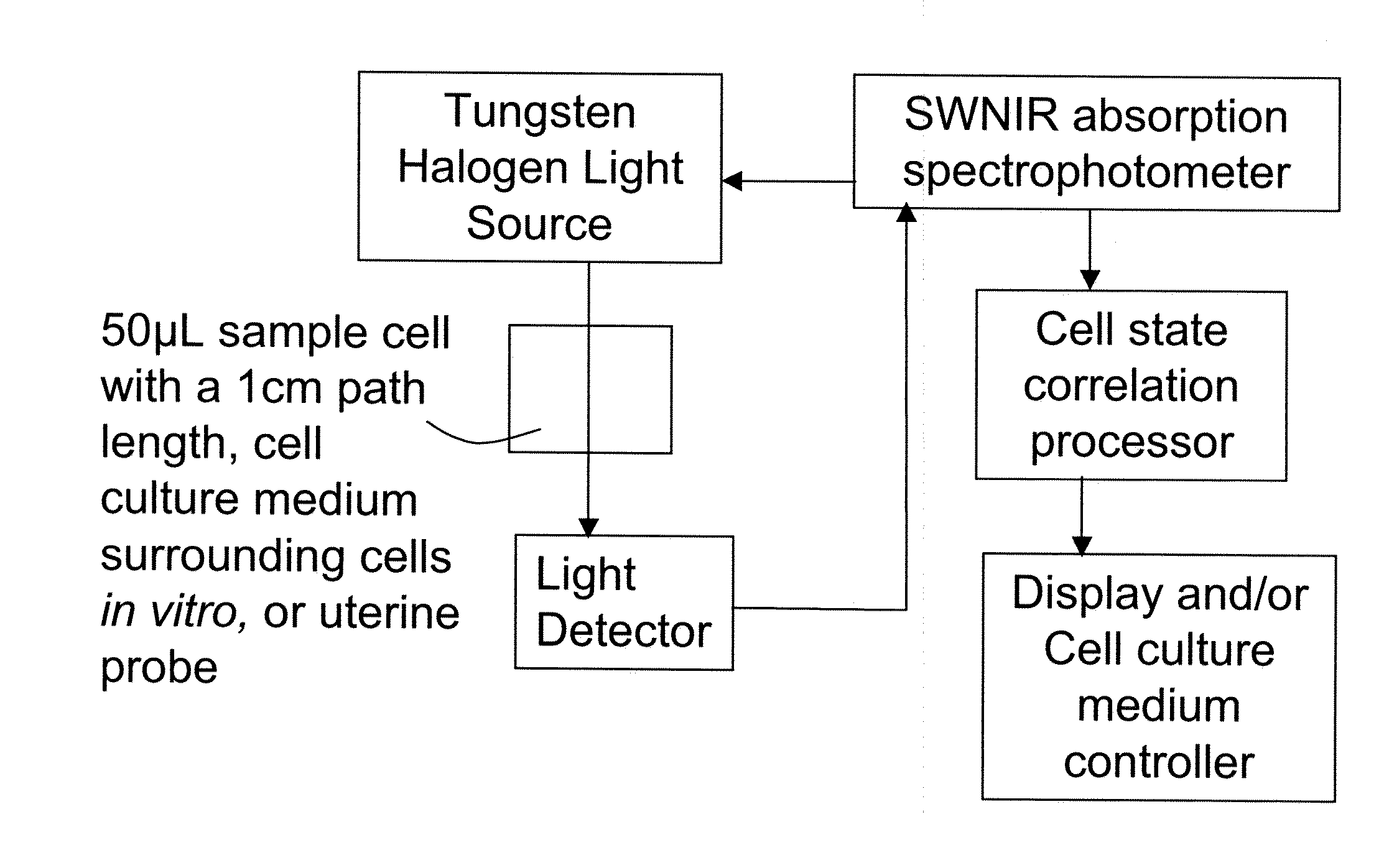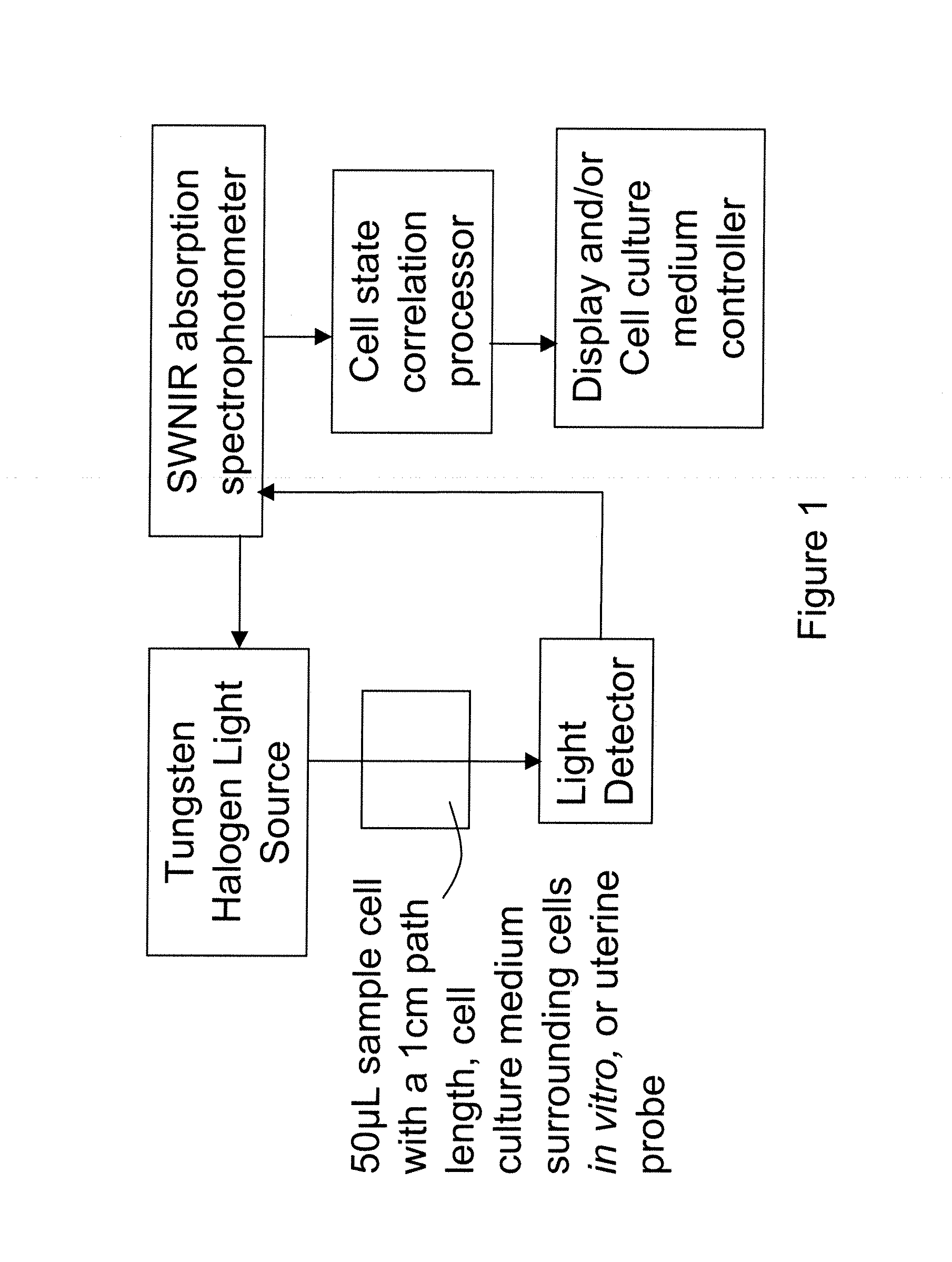Metabolomic determination in assisted reproductive technology
a technology of assisted reproductive technology and metabolic analysis, which is applied in the field of metabolic determination in assisted reproductive technology, can solve the problems of inability to the visual appearance of these cells does not correlate well with viability, and the existing tools for their discovery, identification and quantification do not meet the needs of researchers or clinicians, etc., and achieves low-cost instruments, easy to use, and rapid analysis
- Summary
- Abstract
- Description
- Claims
- Application Information
AI Technical Summary
Benefits of technology
Problems solved by technology
Method used
Image
Examples
example 1
Measurement of OS from Short Wavelength Near Infrared (SWNIR) Spectroscopy of Blood Plasma
Sampling Methodology
[0110]Prior to analysis samples were thawed for one hour to reach room temperature and then centrifuged for 30 min. For cleaning and preconditioning, the sample cell was first rinsed with 200 μl of 0.1 M NaOH followed by 3×200 μl Millipore water.
Short Wavelength Near Infrared (SWMIR) Spectroscopy
[0111]A SWNIR spectrum was recorded of the third water rinse serving as a control. Thereupon, 75 μl of sample was injected into the sample cell and a sample spectrum recorded using the apparatus as shown in FIG. 1. Short wavelength near infrared spectra were obtained from the prepared samples using the following protocol. For the measurements, an American Holographic near infrared spectrophotometer was used. The spectrophotometer is equipped with a two channel input port so that a reference could be obtained simultaneous with the measurement sample. Spectra acquired covered the 580 t...
example 2
[0130]The exemplary methods of Example 1 may be employed in IVF procedures, and in monitoring fetal-maternal health. The methods are also applicable to harvesting oocytes, sperm, and embryos, as well as the cryopreservation of same. In vitro fertilization programs employing these methods are also contemplated.
example 3
[0131]Metabolomic signatures of the oxidative stress constituents in the developing embryo are also obtained using analytical separation techniques which identify nutrient and metabolite fractions of the media. An example of a separation using capillary electrophoresis with ultraviolet optical detection is given in FIG. 7. Constituents associated with embryo development are identified and have both positive and negative correlations with embryo viability. In particular, one nutrient fraction at 900 seconds is negatively correlated with embryo viability while two metabolite fractions (1000-1100 sec) are positively correlated. Combining the information from the both constituent groups, separation of embryos which result in pregnancy and those which did not, is achieved with a sensitivity of 80% and a specificity of 100%. Using the same methodology developed here, separations techniques such as, other electromotive separation techniques, liquid and gas chromatography, can also be used ...
PUM
| Property | Measurement | Unit |
|---|---|---|
| time | aaaaa | aaaaa |
| short wavelength near infrared | aaaaa | aaaaa |
| path length | aaaaa | aaaaa |
Abstract
Description
Claims
Application Information
 Login to View More
Login to View More - R&D
- Intellectual Property
- Life Sciences
- Materials
- Tech Scout
- Unparalleled Data Quality
- Higher Quality Content
- 60% Fewer Hallucinations
Browse by: Latest US Patents, China's latest patents, Technical Efficacy Thesaurus, Application Domain, Technology Topic, Popular Technical Reports.
© 2025 PatSnap. All rights reserved.Legal|Privacy policy|Modern Slavery Act Transparency Statement|Sitemap|About US| Contact US: help@patsnap.com



